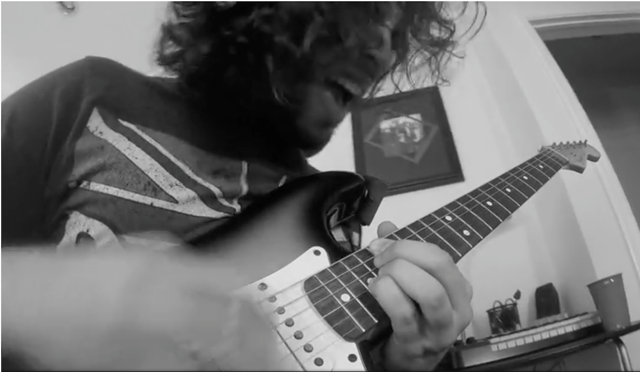There comes a point on every guitarist’s journey when it’s time to go your own way. You know, that nagging feeling you’ve had for a while combined with a general dissatisfaction you can’t quite put your finger on, or perhaps you feel like something is missing. Believe me, you won’t have to look far to uncover your unique voice on guitar and you certainly don’t need to master every style of guitar playing and every technique in existence, as we’ll see. I would advise, however, that you go with your feelings on this one as the mind tends to throw up a lot of contradictory babble and generally try to talk you out of what you’re feeling.
What’s your style?
Name a handful of great guitarists and with very few exceptions they are not masters of every style of playing. In most cases, great players really dominate one or a couple of styles at the most. Can you imagine Segovia playing fusion or Stevie Ray Vaughan playing classical? The takeaway here is to pick a couple of styles you really have a passion for and go deeply into them. You will soon develop your own voice within the style as a result of absorbing its influence on a deeper level.
How much technique is enough?
As with different styles, it is certainly not necessary to master every single technique there is. Moreover, for every ‘correct’ technique there’s a player that turns it on its head. Eddie Van Halen holding the pick with his thumb and middle finger, Jimmy Page or Jimi Hendrix with their thumbs hooked over the top of the neck. In short, for everything your guitar teacher probably told you not to do, there’s a player who uses it as a critical element of their technique. So don’t worry if your picking technique is a little unorthodox, just as long as it doesn’t hurt and by all means get some advice from your guitar teacher just to make sure.
More technique does not necessarily equal more uniqueness either. Take a player such as Kurt Cobain – minimal technique but an instantly recognizable voice on guitar.
Creativity
Creativity defines your voice on guitar. Whenever you create something you’re drawing out that voice, refining it and perfecting it. Spend time listening to yourself, not in a gratuitous, self-indulgent way, but listen as though you were just getting to know a new player as neutrally and non-critically as you can. You’ll begin to recognize certain things you do as your own. If you have any recordings from years gone by, dig them out and compare – you’ll be surprised at how much ‘you’ had already taken root.
Influences
Your influences will seep into your playing whether you like it or not, so be selective about which players you expose yourself too. You don’t even have to learn a single lick (and I don’t recommend you do) from your favorite player’s repertoire to have someone come up and tell you that you sound like such and such player–take it as a compliment though–because whatever moves you or makes you feel something gets internalized and, somewhat unconsciously, comes out when the mood is right.
It’s worth studying your favorite players on paper or by ear to figure out what they’re doing over what chord and how they’re doing it but for me at least, I felt that working out their licks note for note was kind of like rifling through their personal belongings; but that may just be me.
Work on your sound
I’m not talking about gear here as 90% of your tone comes from your fingers. Check out the track, ‘Warm Regards’, by Steve Vai for proof of this. He plays a Strat on this track but it’s about 95% Vai and 5% Strat. The same will be true of your own playing unless you’re into other-worldly Tom Morello type effects which are critical to the song but even then no one plays them quite like he does.
Bring yourself back to the essentials of technique: vibrato, bends, hammer-ons and pull-offs, slides etc., as these are the techniques that provide the foundation of your sound. Superfluous techniques such as sweep picking and tapping tend to add a more generic sound to your playing due the mechanics involved making it harder to bring out the ‘you’. I find bending and vibrato particularly personal things, how many players can you recognize just by hearing them bend or shake a note?
The touchy-feely stuff
I’ll keep the touchy-feely stuff to a minimum but once your own sound starts to bloom you’ll realize it’s a lot like your personality so it figures that the more comfortable and confident you are within yourself, the more your unique voice will shine through. Touchy-feely bit over.
Dare to be different
This really goes hand in hand with what I said at the beginning of the article about trusting what you feel as opposed to listening to the voice in your head. If something doesn’t feel right then you’re probably not going to get too far with it. For example, I never liked clunky bar chords as they always felt kind of… clunky, even today they make me cringe but there are plenty of other alternatives and those are the necessities that define your style. The amazing Michael Hedges talks about this, even seeing himself as a hunter or a scavenger doing whatever it takes in order to achieve the sound he wanted. Go in search of yours.



